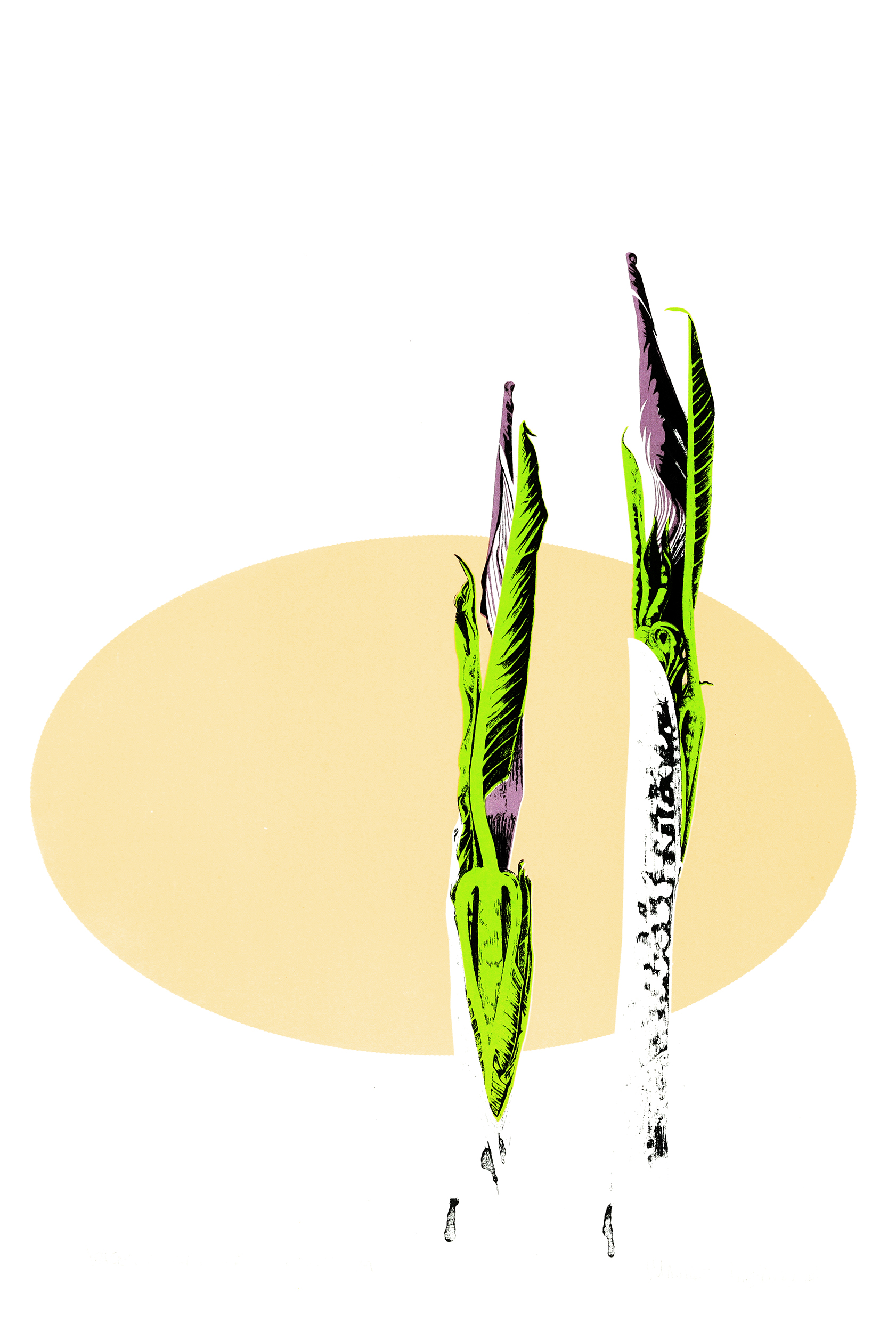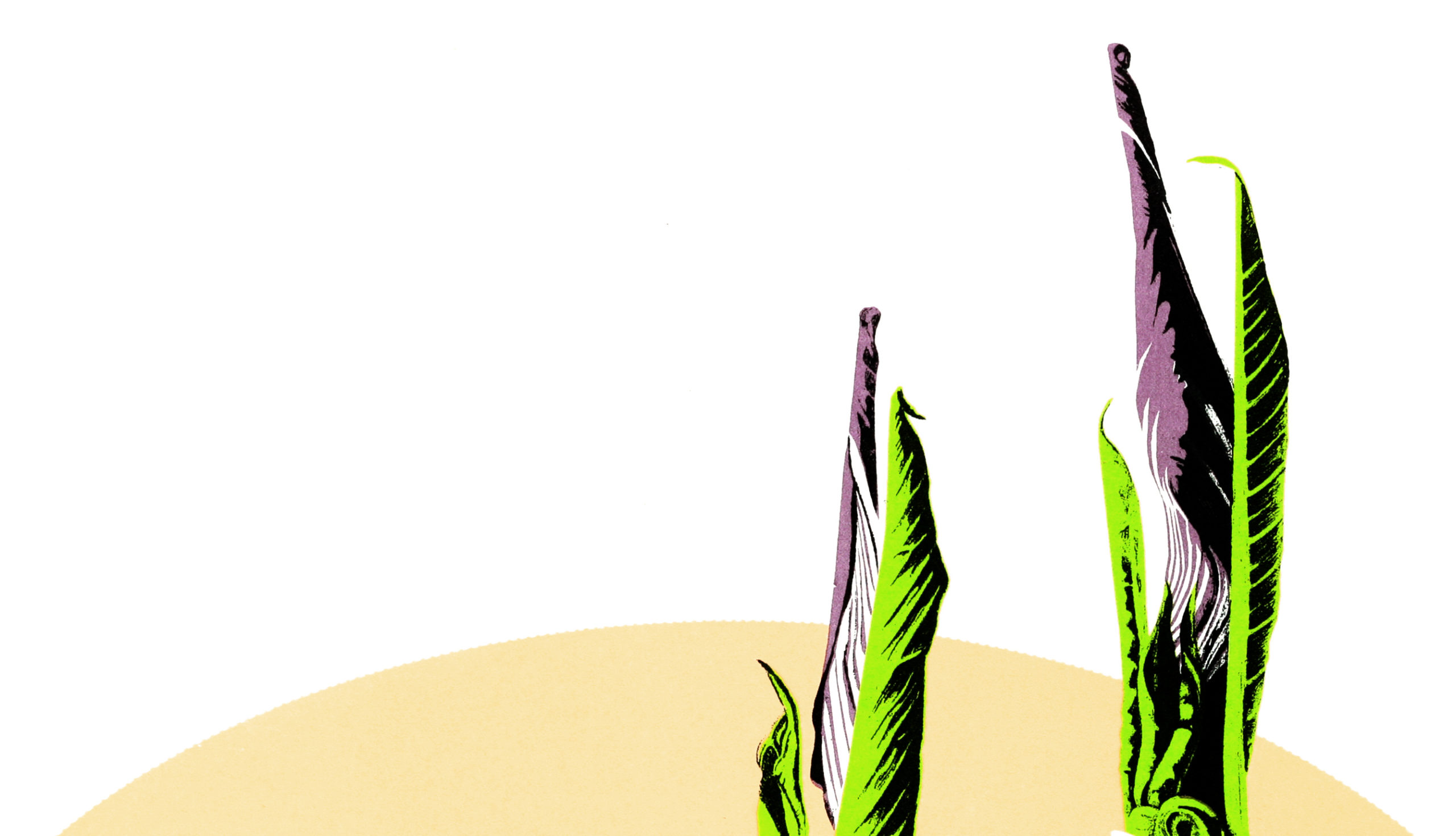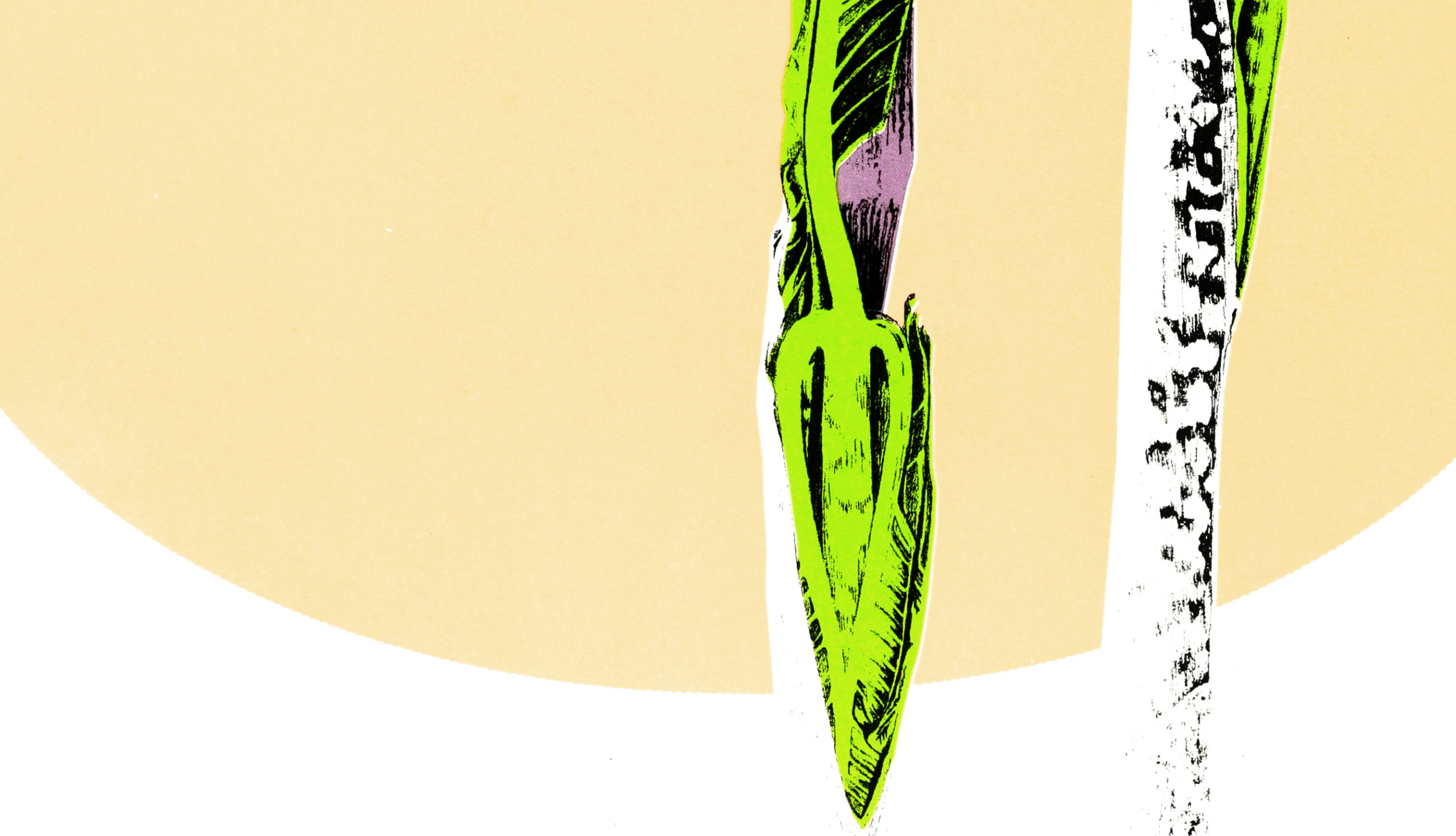Arisaema galiforme Serizawa with geometric styling
Screen print on Somerset cartridge, no.1of 9 float mounted on charcoal board, framed in dark grey/black
42.5cm x 29.7cm, framed to 53cm x 39cm
Limited edition run of 9, 8 AVAILABLE unframed – £440, 1 is framed – £575
Available from the shop unframed >>
An original screen print of Arisaema galiforme Serizawa.
This is a four colour screen print. I really love the purple and white striped inflorescence, just beginning to unwrap in conjunction with the structure of the green leaflets.
*the outer sheaves that protect the growing shoots
Botanical details
Japanese common name: Kanto-mamushi-so and Murasaki-ma-mushi-so. Kanto is a region in Japan. Mamushi is a Japanese pit viper, which could refer to the shape of the spathe-limb. Murasaki is the Japanese word for the colour purple. Section Pistillata Subsection Pedatisecta
A. serratum is a diverse species, which seems to still be in the process of grand polymorphism. According to Jin Murata from personal correspondance, A. galeiforme Serizawa may be called A. serratum in a broad sense.
Deciduous, to 150cm tall, 60cm wide, a wide distribution from Japan, China and Korea, preferring woodland conditions, often found growing with trilliums and violas and in Japan in Cryptomeria japonica forest (Japanese cedar, endemic to Japan, where it is known as sugi). Flowering period March to June, ripening September to November.
“The Genus Arisaema, A Monograph for Botanist and Nature Lovers“, Guy and Liliane Gusman, 2006, A.R.G. Gantner Verlag K.G. “Flora of Japan (in English)”, Jisaburo Ohwi, National Science Museum, Tokyo, Japan. A combined, much revised, and extended translation by the author of his FLORA OF JAPAN (1953) FLORA OF JAPAN— PTERIDOPHYTA (1957) Edited by Frederick G. Meyer Research Botanist, U.S. National Arboretum and Egbert H. Walker Research Associate, Smithsonian Institution SMITHSONIAN INSTITUTION WASHINGTON, D.C. 1965
© Marianne Hazlewood



